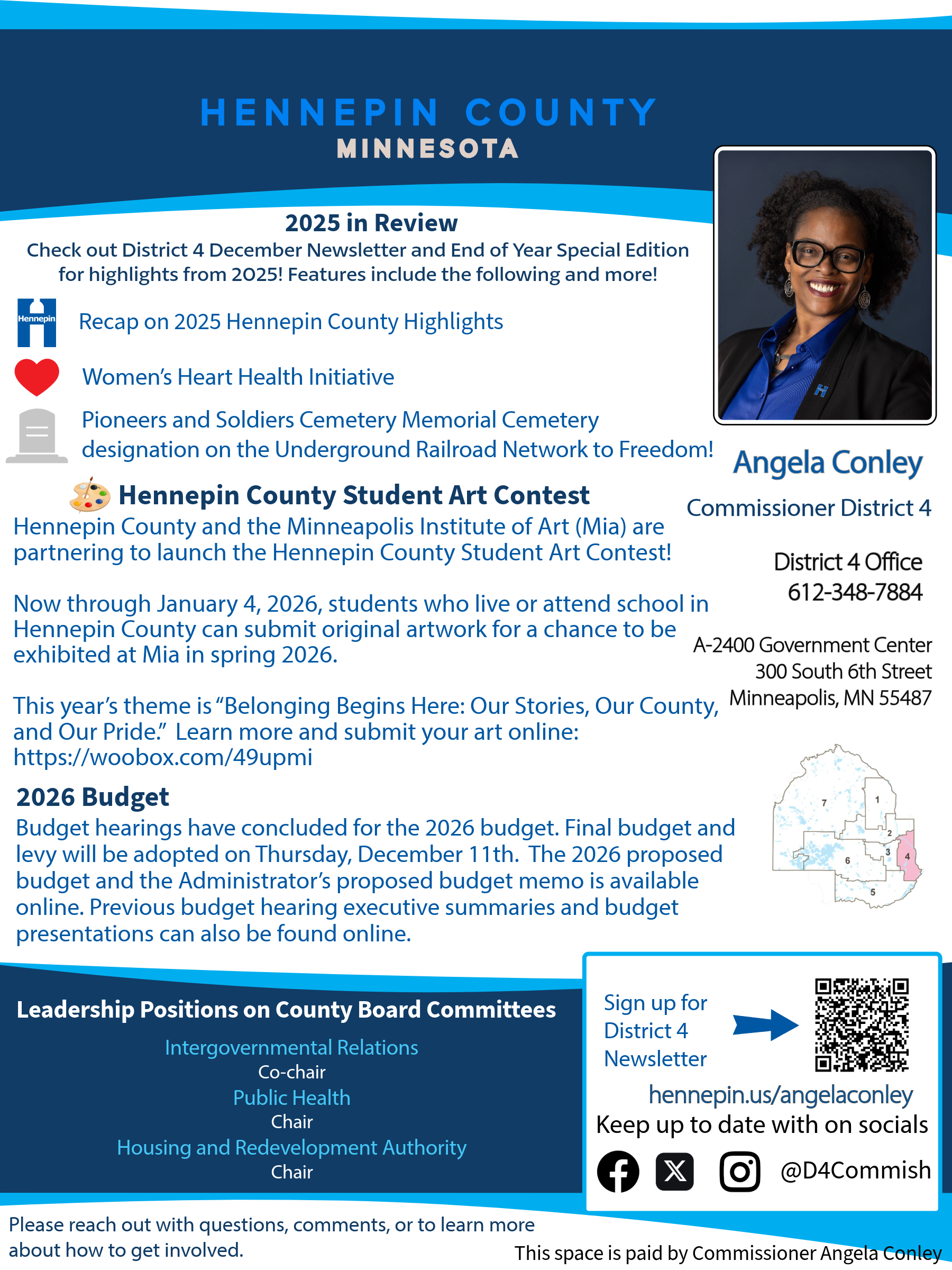By THE LEAGUE OF WOMEN VOTERS MINNEAPOLIS
This is the fifth in a series of six articles about the 2023 Minneapolis City Election, brought to you by the League of Women Voters Minneapolis. All articles available at lwvmpls.org/for-voters
Young Americans have been gathering strength and exerting more influence in recent elections but need help realizing their full political force as voters. For the health of our democracy, we want them to do so. While historically underrepresented at the polls, more 18–29 year-olds voted in the 2020 presidential election nationally than in 2016- close to 50%. Even 2022 midterm turnout was better than expected, inching toward 30%. A positive trend but a far cry from the electoral clout the second-largest age demographic in the U.S. could have.
Generation Z (for Zoomer) are those born between 1997 and 2012, with Gen Z young adults expected to make up 17% of all eligible voters by 2024 and 35% by 2036. Combine Zoomers (sometimes called Plurals) with their older siblings and largest generation, Millennials, and the Brookings Institution expects them to account for a majority of all potential voters within this decade and 60% by 2036. It benefits us all that they are civically educated and engaged.
Pew Research Center describes our youngest voting block as more racially and ethnically diverse, progressive, and with positive attitudes toward government. Research also proves Gen Zs low voting numbers are not due to a lack of interest on their part. Studies from CIRCLE, the Center for Information & Research on Civic Learning and Engagement at Tufts University’s Tisch College, consistently show that outreach, even one interaction, correlates with higher youth voting. When that doesn’t happen, barriers for young voters – particularly first-time voters – remain in place, perhaps for a lifetime. Although highly concerned about the issues in the 2022 midterms, less than half of the young voters CIRCLE surveyed were ever contacted by any civic or political organization, candidate, or party.
Voter outreach, education, and access to the ballot is the primary mission of the League of Women Voters. Locally, LWV Minneapolis holds voter registration drives twice yearly in the city’s high schools. In our unscientific survey of the students we met this past spring, the barriers to voting they cited match some nationwide responses. Although a few said they doubted theirvote would matter, most said they simply didn’t know how to vote, were confused about registering, needed information about candidates, or were unaware of their eligibility.
The great news is the North Star State has made voting easier, rather than harder, while still securing elections. Sixteen and 17-year-olds can pre-register to be ready to vote in their firstelection as an 18-year-old. They can register right at the polls on Election Day or get the ball rolling by checking the box on their State ID or driver’s license application, a form nearly every 16-year-old is itching to fill out! By next year, it will be automatic.
Understanding that classes and work schedules may conflict with voting on Election Day, Minnesota offers early voting, and absentee ballots are the solution for college students away from home. The Secretary of State has a helpful College Students Fact Sheet at www.sos.state.mn.us. These policies have paid off with 15% more young voters in 2020 than the national average.
However, that still leaves a big segment of the Minnesota youth vote on the table with too many teens and young adults in the dark about registration and voting options.
This is a shame because the Minneapolis high school students we met have strong feelings about the issues facing them and this country and want a say in what happens. Their top two concerns, overwhelmingly and across gender and ethnic lines, were the livability of the planet and the rights of all humans. Climate change, pollution, deforestation, and biodiversity loss came up in nearly every conversation, including mentions of specific regions of vulnerability and pipeline controversies. These young people were well-informed and passionate. They cared deeply about vulnerable groups calling for protections of LGBTQ+ rights, policies to end racism and women’s inequality as well as the restoration of reproductive healthcare. They expressed concern for immigrants’ rights and the Indigenous community.
Close behind were quality of life issues, with safety leading the conversation. These students were clearly fed up with the specter of gun violence, being scared in their schools and communities, including a lack of trust in the Minneapolis Police Department. Concerned about the homeless, affordable housing, and safe and reliable transportation, they value their education as key to a successful life. They criticized book banning and called for free/affordable college.
They also displayed a pretty good ‘baloney’ detector, so politicians beware. Your young constituents and future voters reject unfulfilled promises and lies. They demand honesty, credibility, and adherence to the law from those who make them.
Civically educating and empowering this sleeping giant of a voting block cannot begin too early, and a good example is invaluable. Several students told us they would vote because their families do. CIRCLE offers many ideas to grow the youth vote at circle.tufts.edu, and its research reminds us of the power of even a single interaction encouraging a new voter. When it comes to the power of the vote, you can pay it forward with information and guidance, and LWV Minneapolis is here to help. Our democracy depends on it.
For information on voter registration and eligibility, voting deadlines and locations, questions about Ranked Choice Voting, and more, go to: vote.minneapolismn.gov. For help developing your voting plan go to lwvmpls.org.









